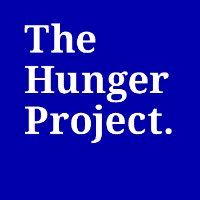SOFI 2018: Climate change has been identified as a key force behind the ongoing rise in global hunger.
The 2018 State of Food Security and Nutrition in the World report released in September 2018 explores the unsettling and ongoing rise in global hunger. For the third year in a row, rates of undernourishment have increased worldwide, with an additional six million people falling into conditions of hunger over the course of a year, bringing the estimated total to 821 million people affected. Africa continues to bear the brunt of this reality, with 21 percent of the population — more than 256 million people — suffering from undernourishment.
Despite the difficult news, we at The Hunger Project encourage the sector as a whole to acknowledge the hard-won successes by our partners in hunger. Significant progress has been made on the third Sustainable Development Goal — good health and well being — with the number of stunted children decreasing from 165.2 million in 2012 to 150.8 million in 2017, a 9 percent decline. Additionally, as of 2017, the practice of exclusive breastfeeding before the age of six months — a nutritional benefit that ripples throughout a person’s life — is 1.5 times the rate of prevalence in Africa and Asia than it is in Northern America. Clearly, many interventions in the fields of health and community development are working.
Where progress is notably lacking is in the area of environmental responsibility. The five UN agencies responsible for compiling the report warn that “climate shock” is just as detrimental to food security as major conflict.
Climate-related disasters such as heat, droughts, floods and storms have doubled since the early 1990s, harming, among other aspects of society, agricultural productivity and thus directly reducing access to food. According to SOFI 2018, drought alone “causes more than 80 percent of the total damage and losses in agriculture, especially for the livestock and crop production subsectors.” The vast majority of people in rural communities rely heavily on agriculture, with their well-being closely tied to the natural environment. This means that the 16 million people in communities working with The Hunger Project are extremely vulnerable to weather events and reinforces the extreme importance of building resilience to climate change — a program initiative at the heart of our work across Africa, South Asia and Latin America. Because women are disproportionately denied access to resources, especially when those resources are scarce, we work with our communities to implement programs that highlight the vital role of gender equality and community-led development in the mission to mitigate climate change and build resilience.
While the figures outlined in the report are alarming, they should not undermine our efforts. We do not stand alone in facing this challenge. Organizations around the world can join The Hunger Project in leveraging influence regionally and at the highest levels of government to promote sustainable farming practices, raise awareness of and build capacity to adapt to climate change and facilitate reforestation and tree planting campaigns. We can learn from the interventions that are working to find new ways to build inclusive, cohesive and resilient communities where women are empowered. We will continue to advocate for women-centered and community-led approaches with partner organizations and governments worldwide: this is how, together, we can achieve the commitments the world has made with the Sustainable Development Goals.
The 2018 State of Food Security and Nutrition in the World report was published jointly by the Food and Agriculture Organization of the United Nations (FAO), the International Fund for Agricultural Development (IFAD), the United Nations Children’s Fund (UNICEF), the World Food Programme (WFP) and the World Health Organization (WHO)
